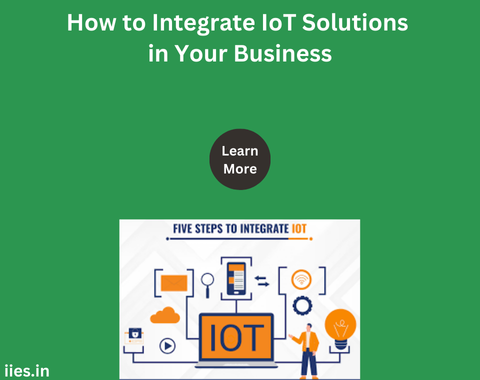
The Internet of Things (IoT) is revolutionizing the way businesses operate by enabling a new level of connectivity and automation. IoT refers to the network of interconnected devices that collect and exchange data, offering businesses opportunities to improve efficiency, reduce costs, and create innovative products and services. Integrating IoT solutions into your business can provide a significant competitive advantage, but it requires careful planning and strategic implementation.
Before integrating IoT and embedded systems into your business, it’s essential to understand the ecosystem. This ecosystem comprises devices (embedded systems, sensors, actuators, etc.), connectivity (Wi-Fi, Bluetooth, cellular, etc.), data processing (embedded processors, edge computing, cloud services), and user interfaces (dashboards, mobile apps). Embedded systems play a crucial role in this ecosystem by enabling devices to perform dedicated functions efficiently and reliably within the IoT framework.
Successful IoT integration begins with clearly defined objectives. What do you want to achieve with IoT? Whether it’s improving operational efficiency, enhancing customer experience, or developing new revenue streams, your goals will shape the design and implementation of your IoT strategy. Conduct a thorough needs assessment to identify the specific areas where IoT can provide the most value to your business.
One of the key considerations in IoT integration is scalability. As your business grows, so will the number of connected devices and the volume of data generated. Designing a scalable IoT infrastructure ensures that your system can handle increased demand without compromising performance. This includes choosing the right network protocols, cloud services, and data storage solutions that can expand with your business.
With the increased connectivity that IoT brings, data security and privacy become paramount. IoT devices often handle sensitive information, making them potential targets for cyberattacks. Implement robust security measures, such as encryption, secure authentication, and regular software updates, to protect your data. Additionally, comply with relevant data privacy regulations to maintain customer trust and avoid legal complications.
IoT generates vast amounts of data, but its value lies in how this data is managed and analyzed. Implement data management strategies that allow you to filter, store, and retrieve relevant information efficiently. Leveraging data analytics tools can help you gain actionable insights from your IoT data, enabling informed decision-making and optimizing business processes.
Choosing the right IoT platform is crucial for seamless integration. The platform should support a wide range of devices, offer flexible deployment options, and provide comprehensive tools for device management, data analytics, and application development. Evaluate different platforms based on their compatibility with your existing infrastructure, scalability, security features, and cost-effectiveness.
For IoT to deliver its full potential, it must be integrated with your existing business systems, such as ERP, CRM, and supply chain management systems. This integration allows for real-time data exchange, process automation, and improved cross-functional collaboration. Work with your IT team or IoT solution providers to ensure that your IoT system is compatible with and complements your existing technology stack.
The introduction of IoT solutions will likely require changes in workflows and business processes. It’s essential to prepare your employees for these changes through comprehensive training programs. Ensure that your team understands how to use IoT devices and interpret the data they generate. Additionally, effective change management strategies can help minimize resistance and foster a culture of innovation within your organization.
IoT integration is not a one-time process; it requires ongoing monitoring and optimization. Regularly assess the performance of your IoT system against your business objectives and make adjustments as needed. Stay updated with the latest IoT trends and technologies to continuously enhance your solution and maintain a competitive edge.
Integrating IoT solutions into your business can unlock new opportunities for growth, efficiency, and innovation. By understanding the IoT ecosystem, setting clear objectives, building a scalable infrastructure, and ensuring data security, you can successfully implement IoT and drive your business forward in the digital age.
Indian Institute of Embedded Systems – IIES